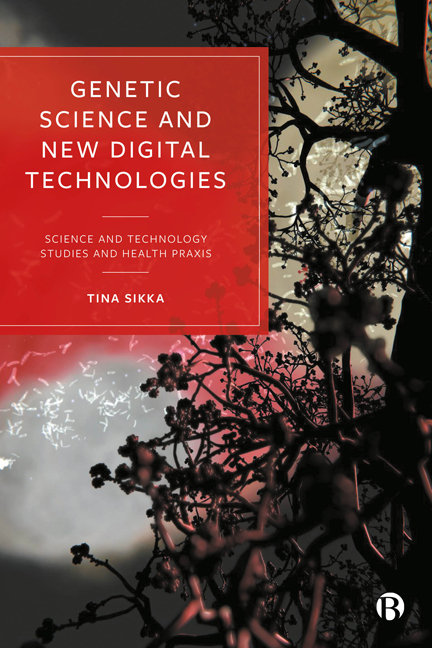Book contents
- Frontmatter
- Contents
- Notes on Contributors
- Introduction
- 1 Social and Behavioural Genomics and the Ethics of (In)Visibility
- 2 PureHealth: Feminist New Materialism, Posthuman Auto-Ethnography and Hegemonic Health Assemblages
- 3 Ambivalent Embodiment and HIV Treatment in South Africa
- 4 An ‘Artificial’ Concept as the Opposite of Human Dignity
- 5 Health Praxis in the Age of Artificial Intelligence: Diagnostics, Caregiving and Reimagining the Role(s) of Healthcare Practitioners
- 6 Digital Health Technological Advancements and Gender Dynamics in STS
- 7 Automation in Medical Imaging: Who Gets What AI Sees? Insights from the Adopters’ Perspective
- 8 Robots for Care: A Few Considerations from the Social Sciences
- 9 Are Ovulation Biosensors Feminist Technologies?
- Conclusion
- Index
Conclusion
Published online by Cambridge University Press: 28 March 2024
- Frontmatter
- Contents
- Notes on Contributors
- Introduction
- 1 Social and Behavioural Genomics and the Ethics of (In)Visibility
- 2 PureHealth: Feminist New Materialism, Posthuman Auto-Ethnography and Hegemonic Health Assemblages
- 3 Ambivalent Embodiment and HIV Treatment in South Africa
- 4 An ‘Artificial’ Concept as the Opposite of Human Dignity
- 5 Health Praxis in the Age of Artificial Intelligence: Diagnostics, Caregiving and Reimagining the Role(s) of Healthcare Practitioners
- 6 Digital Health Technological Advancements and Gender Dynamics in STS
- 7 Automation in Medical Imaging: Who Gets What AI Sees? Insights from the Adopters’ Perspective
- 8 Robots for Care: A Few Considerations from the Social Sciences
- 9 Are Ovulation Biosensors Feminist Technologies?
- Conclusion
- Index
Summary
What is new, is how social and behavioural genomics research is converging with systems of education to produce sociotechnic imaginaries that either enhance or further diminish the sociopolitical visibility of marginalized groups. (Daphne Oluwaseun Martschenko, Chapter 1)
[T] his chapter has attended to and explored important sites of disjuncture, inconsistency and potential rupture around what it means to be in âgood healthâ. This, I argue, can function as sources of opportunity for rethinking health and challenging the hidden dimensions of inequality that continue to be reproduced. (Tina Sikka, Chapter 2)
[W] hile research on the biomedicalization of HIV has generated a rich understanding of the complexities of living with HIV, the âpost crisisâ framing (at a time of global austerity), occludes the significant challenges that continue to be faced by HIV-positive people, and by HIV-positive women in particular. (Elizabeth Mills, Chapter 3)
[O] ne of the answers to the question of why the potential threats and fears of artefacts do not disappear seems to be largely due to the fact that the development of such technologies prioritizes profits, neglects the risk assessment from the perspective of the consumers and does not establish disabling technologies against the target technology. (Kazuhiko Shibuya, Chapter 4)
AI could be a deliberative and caregiving partner in future pandemics that might help individual patients avoid the isolation, disconnection and fear that were experienced so significantly over the past year and a half by so many while creating safer clinical spaces. (Kevin Cummings and John Rief, Chapter 5)
Researchers and practitioners in science communication need to prioritize inclusion, equity and intersectionality in order to engage and benefit the entire community with science communication. (Anamika Gulati, Chapter 6)
Far from the idea that associating negative concepts of authority and control with technology can actually warn against the adverse effects of technological changes, which could also lead to positive effects ⦠(Filomena Berardi and Giorgio Vernoni, Chapter 7)
If robots are to be developed, it is essential to involve in the process the different actors who, in one way or another, are involved in their use (patients, relatives, caregivers, health professionals and so on) and to find ways to enable their collaboration with engineers and designers. (Miquel Domenech and Nuria Valles-Peris, Chapter 8)
- Type
- Chapter
- Information
- Genetic Science and New Digital TechnologiesScience and Technology Studies and Health Praxis, pp. 224 - 227Publisher: Bristol University PressPrint publication year: 2023



